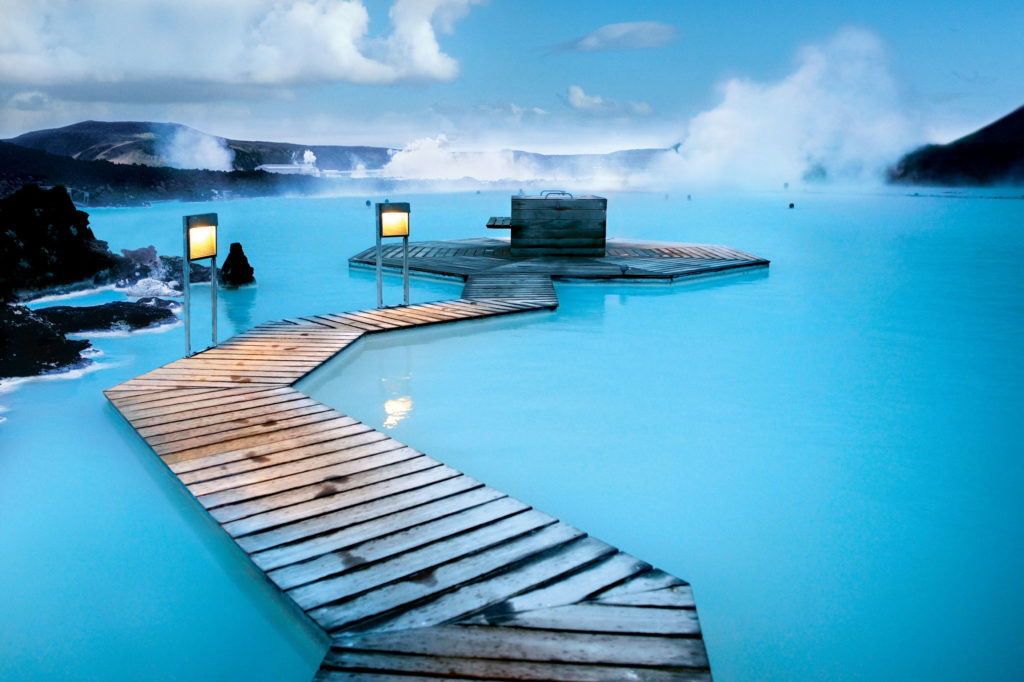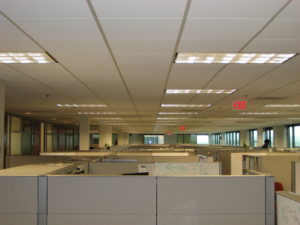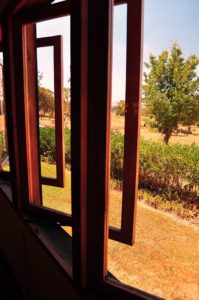

Features
So Sweet / And So Cold: Sensation, Perception, and Hedonic Response
Georgina Davis
Share
Around the time I decided that I needed to read more about alliesthesia, I came across an interesting bit of news while searching for information on this curious term. The article was about a prototype reversible fabric that performs in both hot and cold conditions, the implication being that one day it could be used for clothing that keeps the wearer comfortable in a range of temperatures. Widening the threshold for thermal comfort in buildings could in turn save time, money, and energy. It’s a good reminder of how much effort goes into keeping building occupants at a comfortable temperature in mechanically conditioned spaces, especially when a room full of people each has a different preference. (Side note: is this fabric a little reminiscent of the Fremen stillsuits from Dune?)
It turns out that this problem is already being addressed by architects and engineers, not through the use of Sci-Fi suits but through a thermal model that uses alliesthesia to determine comfort,1 as well as the ongoing development of personal comfort models.2 As the name suggests, this latter approach to thermal comfort focuses not on average data from large groups, but on individuals’ immediate thermal satisfaction with a space. Alliesthesia is traditionally used as a medical term to describe a physiological response to a stimulus on a part of the body not necessarily at the source of the stimulus; a more widely used definition describes scenarios in which a person’s current internal state affects how a stimulus is perceived (if it provides pleasure or not, otherwise known as the “hedonic response”).3 When used in a design context, it refers more specifically to the “…influence that dynamic thermal environments can have on creating enhanced levels of occupant satisfaction compared to static and uniform environments, especially moving beyond ‘neutrality’ to create ‘thermal pleasure.’”4 The act of measuring pleasure so rarely appears in HVAC handbooks or codes that the appearance of the word “hedonic” definitely caught my attention.
It’s not difficult to imagine sensations that elicit a positive hedonic response and see how they are often a study in contrasts. Think of the distinct pleasure you get walking across cold stones to enter a bubbling hot tub, or on a summer afternoon the way a piece of cold fruit feels as it slides into your core: all perceptions of pleasure that result from experiencing thermal variation. (One does not need to be in pain or severe discomfort, but the farther from being neutral one is, the greater the sense of pleasure when the feeling is “corrected.”) Think of the variety of spaces, temperatures, and other thermal stimulation you might encounter at a thermal bath, going from cold to warm to very hot water (are Peter Zumthor’s thermal baths at Vals still the most iconic? Maybe you prefer Icelandic geothermal pools).
No great pleasure may be had if one’s inner state (in this case, core body temperature) is consistently neutral; for example, a plate of food is delicious to the famished man but only satisfactory if his hunger is small, and even unpalatable if he is sated. Architecturally this translates to the experiences one has entering a building; upon arrival on a cold day you appreciated the immediate warmth of the lobby, but as you move deeper inside you acclimate and find the same temperature to be too warm.
It should be noted that the HVAC literature on thermal comfort and alliesthesia draws from the distinction made by psychologists between thermal sensation and thermal comfort, with comfort being associated here with perception. As DeDear clarifies, “[s]ensation is regarded as the detection of a stimulus in the environment, whereas perception refers to the way in which one interprets that information.”5 For a mechanical engineer, a comfort zone might be the temperature range that occupants describe as neither too hot nor too cold: a neutral zone free of extremes or variations. But this formulaic approach says nothing about satisfaction, let alone what Lisa Heschong argues should be the goal of a thermal environment: delight.
Why do most mechanically conditioned spaces not provide “thermal pleasure”? As with so many things, the conflict may arise in the contradictions created by man living in an increasingly artificial environment. In her 1979 book Thermal Delight in Architecture,6 Heschong challenges the idea that, as with building acoustics, the best thermal environment is one that can be ignored: a hidden, mechanized system that keeps a space at a uniform temperature. She argues that the design of the thermal environment should be thought of more like food consumption: we know what we need as a means of basic nutrition for survival, but what we prefer to eat is not just a survival pill, or even the same well-rounded meal every day, but different experiences that are sensual, cultural, and symbolic.
“If the very best that can be achieved in an isothermal, cool, dry and still indoor climate is ‘neutral’ or ‘acceptable’ for little more than 80% of a building’s occupants at any one time, then the standards that have been set to date leave much to be desired.”7
Which leads us to ask, If uniformly conditioned interior environments are boring and rarely satisfactory to a majority of occupants, what is the alternative? You might guess that variety and sovereignty figure heavily into a solution. These words are already appearing heavily in descriptions of the “office of the future,” one in which people have the freedom to work in a variety of spaces in a building or campus and have the freedom to choose whether they need a space for quiet solitude, social interaction, or anything in between. It is understood that these places will also be healthy and energy efficient, so it seems logical that the design of the thermal environment be considered alongside lighting conditions and access to views of nature.
Dr. Gail Brager, Professor in the Building Science & Sustainability area of the Department of Architecture at UC Berkeley, has been writing about this for years. “Strategies for providing enriched thermal environments,” she says in an interview, “must be conjoined with reducing energy; these are inseparable for any building striving for high performance. There is enormous potential for achieving this if building designers and operators can find efficient ways to allow building temperatures to float over a wider range, more in line with the natural swings of the outdoor climate, while affording occupants individual control of comfort.”8 Mimicking nature and providing more individual control: this would seem to be an appealing, even biophilic combination.9
Exploitation of air motion across occupants’ exposed skin surfaces through purposive natural ventilation or localized mechanical services, localized heating and cooling by contact to exposed body surfaces, or thermal gradients in vertical or horizontal planes, not only hold the prospect of enhancing thermal pleasure experienced inside buildings, but also open up a much more diverse suite of low-energy design options compared with the brute-force, sealed facade air-conditioning mono-culture that pervades the architecture and indoor environmental engineering of recent decades.10
It makes sense that we would find greater pleasure in thermal landscapes that offer the variety of sensations from natural environments. For most of human history this was the only way to build; one can point to any number of examples of vernacular architecture that are beautiful and timeless because they addressed the needs of the local climate and the occupants instead of ignoring them the way modern, mechanically ventilated buildings can.
For those who include designs for alliesthesia in their buildings, the ultimate challenge is to find ways to naturally ventilate large urban buildings. From the perspective of today’s code, it is difficult to predict and control over an entire building. Standards like WELL encourage the (careful) use of natural ventilation, but it would take a major shift in technology and the way we design and interact with our buildings for this to become more commonplace.
The goal for other designers might be finding ways to focus thermal models or systems more on individual occupants than the space. In addition to ventilation, positive experiences with alliesthesia are also possible with the use of materials. Soft leather on walls, cool terracotta tiles underfoot, the feel of wood grain on your hands: these can all be part of our tactile (and biophilic) experience inside of a building.
More than just creating conditions that return us to homeostasis, the purpose of addressing alliesthesia in design touches on something that makes us human. Yes, our bodies reward us for removing ourselves from painful situations, but is there not also something unique that finds such enjoyment experiencing momentary extremes?
I have eaten
the plums
that were in
the icebox
and which
you were probably
saving
for breakfast
Forgive me
they were delicious
so sweet
and so cold
This is Just to Say, by William Carlos Williams
1. de Dear, R. (2011). Revisiting an old hypothesis of human thermal perception: alliesthesia, Building Research & Information, 39:2, 108-117, DOI: 10.1080/09613218.2011.552269
2. Kim J., Schiavon S., Brager G. (2018). Personal comfort models – A new paradigm in thermal comfort for occupant-centric environmental control, Building and Environment (in Press).
3. Cabanac, M. (1971). Physiological role of pleasure. Science, 173(4002), 1103-1107.
4. BRAGER, G. (N.D). ALLIESTHESIA – A HIGH-LEVEL SUMMARY. UNPUBLISHED NOTES.
5. de Dear, (2011).
6. Heschong, L. (1979). Thermal delight in architecture. Cambridge, Mass: MIT Press.
7. de Dear, (2011).
8. Potts, M. (2017). “3 Questions: Gail Brager on optimizing energy use and performance of buildings.” MIT Energy Initiative.
9. See Pattern 4, “Thermal and Airflow Variability” in 14 Patterns of Biophilic Design
10. de Dear, (2011).
More Reading
Arens, E., Humphreys, M.A., de Dear, R. and Zhang, H. (2010). Are ‘Class A’ temperature requirements realistic or desirable? Building and Environment, 45, 4–10.
Brager, G. S., & De Dear, R. J. (1998). Thermal adaptation in the built environment: a literature review. Energy and buildings, 27(1), 83-96.
Header Image: Alan Levine/Flickr
Feature Image: Dar’ya Sip/Flickr
Filed under:
Georgina Davis
is a research analyst at Terrapin and has a background in architecture and field research. She completed her master’s and doctoral degrees at Texas A&M University and her bachelor's at Washington University in St. Louis. Her interests include energy efficiency and occupant comfort in extreme environments and bio-inspired innovation.
Topics
- Environmental Values
- Speaking
- LEED
- Terrapin Team
- Phoebe
- Community Development
- Greenbuild
- Technology
- Biophilic Design Interactive
- Catie Ryan
- Spanish
- Hebrew
- French
- Portuguese
- Publications
- Occupant Comfort
- Materials Science
- Conference
- Psychoacoustics
- Education
- Workshop
- Mass Timber
- Transit
- Carbon Strategy
- connection with natural materials
- interior design
- inspirational hero
- biophilia
- economics of biophilia
- Sustainability
- wood
- case studies
- Systems Integration
- Biophilic Design
- Commercial
- Net Zero
- Resorts & Hospitality
- Energy Utilization
- Water Management
- Corporations and Institutions
- Institutional
- Ecosystem Science
- Green Guidelines
- Profitability
- Climate Resiliency
- Health & Wellbeing
- Indoor Environmental Quality
- Building Performance
- Bioinspired Innovation
- Biodiversity
- Residential
- Master Planning
- Architects and Designers
- Developers and Building Owners
- Governments and NGOs
- Urban Design
- Product Development
- Original Research
- Manufacturing
- Industrial Ecology
- Resource Management
- Sustainability Plans
- Health Care
- Carbon Neutrality






